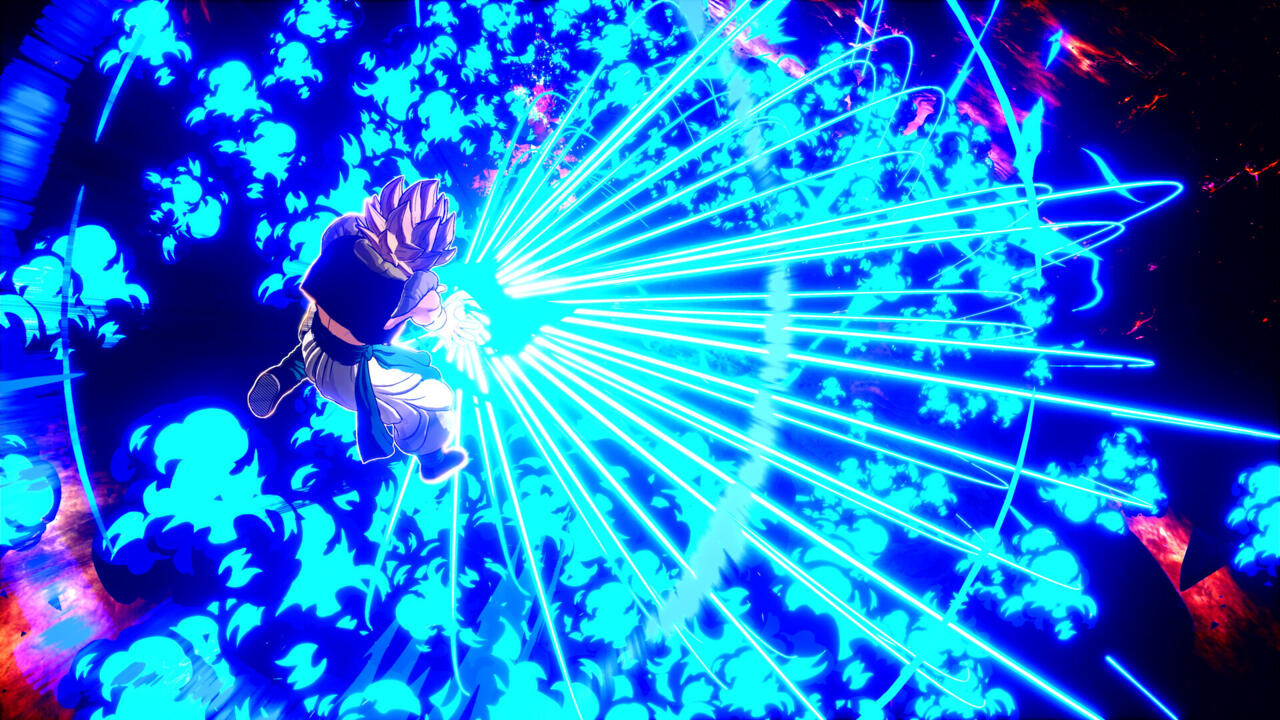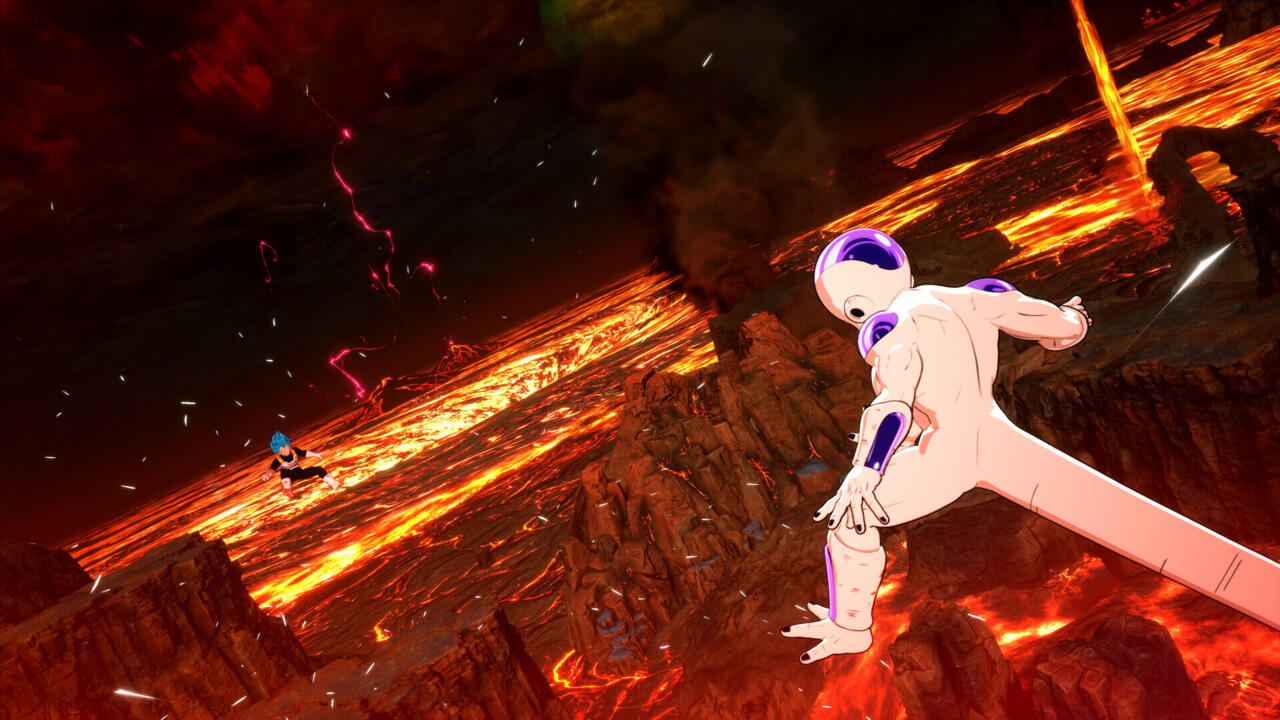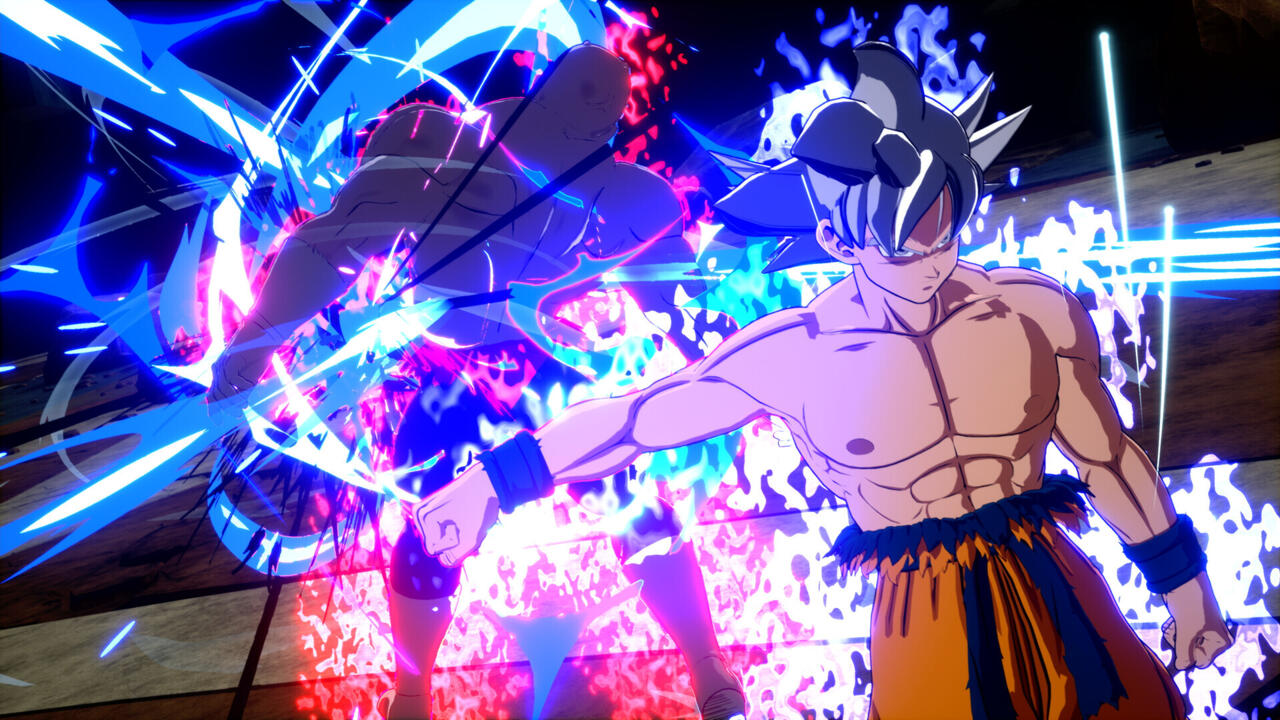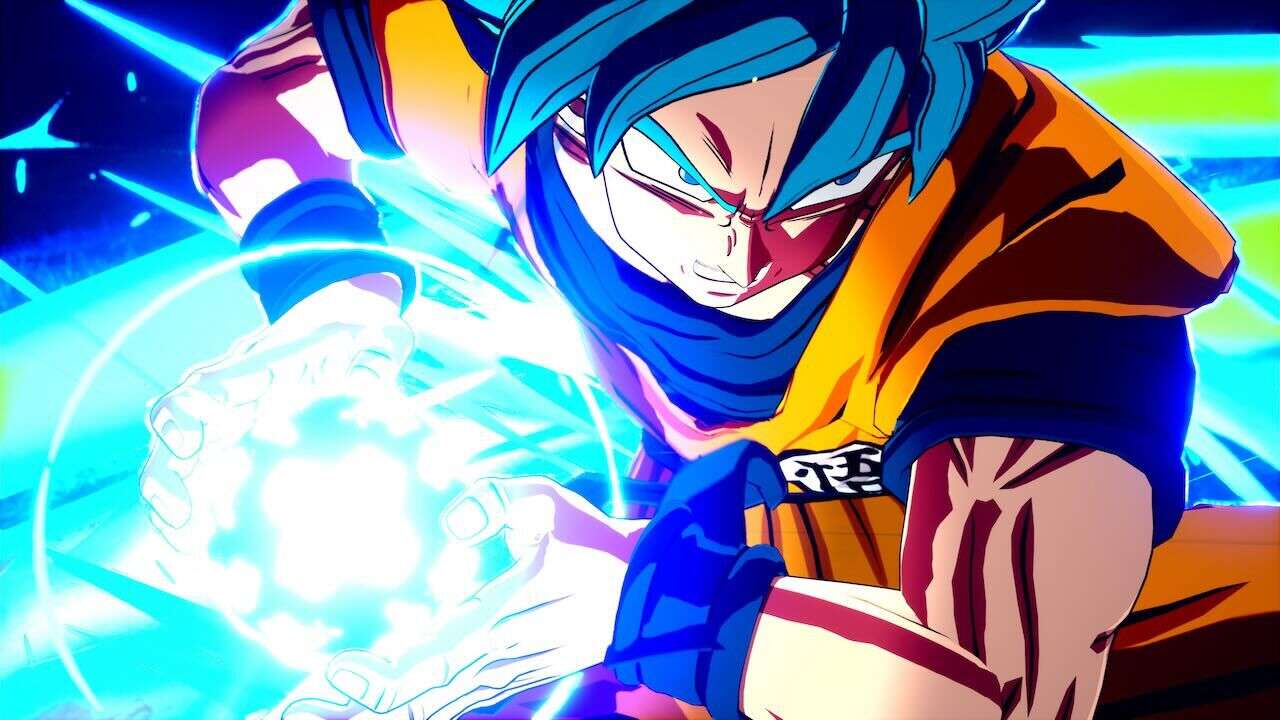It’s been 17 years since Dragon Ball Z: Budokai Tenkaichi 3 and its 3D-arena-based combat graced consoles, and ever since, fans have clamored for a return to that old style. Dragon Ball: Sparking Zero has answered the call, with the benefit of an entirely new story arc to explore thanks to Dragon Ball Super–which wasn’t part of the Dragon Ball canon until 2013. For the most part, the Tenkaichi approach still works thanks to its fast and energized battle system; however, repetitive gameplay and limited mode options leave us wanting more from this battle.
Dragon Ball: Sparking Zero is a return to that old Tenkaichi format, where two fighters wage war in an open arena lined with buildings, rocks, cliffs, and more just waiting to be destroyed. Each fighter has a mix of physical and ki-based attacks, highlighted by flashy and bombastic special attacks like the Kamehameha, Final Flash, Spirit Bomb, and other iconic Dragon Ball techniques.
As is immediately noticeable, the visual style of Sparking Zero is top-notch, from the main menu to the heat of battle. Every character moves and fights fluidly, and the small scenes that play during a successful ultimate attack are a delight, which makes connecting with those moves even more exhilarating. In particular, attacks like the Point-Blank Kamehameha performed by Ultra Instinct Goku’s Sign form–the animation complete with scenes ripped right from the anime–are amazing to close out a match with.
Moving around the arena and approaching a battle is exciting, but before long, each fight devolves into button-mashing exercises. Every character on the roster shares the same basic control scheme: Close-range physical attacks are assigned to one button, short ki blasts are set to another, and special moves are performed by holding a shoulder button while pressing either of those two buttons. They can also dodge, dash, ascend into the air or descend back to the ground, and counter while being attacked. Finally, if a character charges their ki beyond full power and activates Sparking, they have access to a devastating ultimate attack.
The adrenaline is there in every match, as mashing the attack button feels very close to the rapid-fire punches and kicks seen in the anime, but those looking for complex, skill-based fighting tech will not find it here. In fact, the majority of battles fall into a familiar loop: The match would begin, we’d unleash a few attacks and knock the opponent away, then we’d charge up our ki meter and repeat the process until the match was over.
There’s an exciting energy to this type of battle–pulling off a Super Spirit Bomb and watching the sequence play out is intensely satisfying every single time–and learning about different characters throughout Dragon Ball’s lore is genuinely fun and interesting. However, the lack of depth in the core battle scheme gives it a limited shelf life that’s better for quick-play sessions rather than marathon gaming. Then again, this is also true of previous Budokai Tenkaichi games, and that hasn’t stopped diehard fans from enjoying it, so series vets may feel right at home.
Nowhere is this more evident than in Episode Battle, the main single-player experience in Sparking Zero. Here, you’ll select one of the franchise’s main characters and run through the story from that character’s perspective, fighting all of the key battles that character faces along the way. Cutscenes between each fight range from still images with voices talking over them to short, fully animated scenes featuring a conversation between different characters.
This creates a repetition that, despite the battles themselves being fun, wears thin fast, as the cutscenes don’t consist of much more than a few quips before jumping into the next battle. This repetition is exacerbated by a few odd difficulty spikes sprinkled throughout the adventure. Granted, most of these come at the most climactic moments in the series and against the big bads of Goku’s adventures, but some of these spikes are downright unfair; no matter how big Great Ape Vegeta is, that monkey should not be able to tank a 10-hit combo without flinching, grab you before you can land hit number 11, and instantly deplete one of Goku’s five health bars. Furthermore, losing a battle causes a brief but unskippable cutscene to play before you can choose to retry, and multiple losses means multiple trips through said cutscene, with the same voice clips playing every time. That gets annoying fast.

There are some attempts at variety in Episode Battles, as some of the cutscenes offer choices or win conditions that lead to branching storylines. These choice-based moments are a novel way to spice up the oft-trodden story beats of the saga–Dragon Ball Z’s arcs, especially. In one early choice, when Piccolo approaches Goku about fighting Raditz together, you can choose to eschew his invitation and go it alone, which results in Krillin joining Goku instead in a “what if” scenario.
These one-offs are neat, but they ultimately result in nothing more than one or two extra fights before returning to the established path–which make these “what ifs” little more than temporary distractions. Episode Battle as a whole does a good job of retelling the winding story of the Dragon Ball series, but with the exception of the Dragon Ball Super story arcs, this is ground that’s been covered many times before, and the choice-based alternate routes don’t do quite enough to mix things up.
In standard matches, the number of playable characters on the Sparking Zero roster sits in the triple digits: 181, to be exact. However, as is a running trend in Dragon Ball fighting games, that number is artificially inflated by the faces found in some of those slots. For starters, there are 19 different versions of series hero Goku, including four “base forms”–where Goku is in his normal, black-haired state. Every transformation from Super Saiyan to Ultra Instinct has received its own slot, as well as his kid versions from Dragon Ball GT and that version’s transformations. That 19 figure also doesn’t include Goku Black–the villainous alternate version from Dragon Ball Super–and his various forms, nor does it include Goku’s various fusions with Vegeta and those transformations.

Goku’s not alone in excessive roster representation, as Vegeta holds 14 slots (again not including fusions or his GT villain alt Baby Vegeta), Gohan fills 11, and Trunks fills nine. Villains are also not immune to these roster-padding techniques, with Frieza, Cell, and Buu also occupying at least five slots each. Some of these forms can even transform into other forms mid-match, which makes the overabundance of “unique” character slots seem even more arbitrary.
Granted, it is a good thing to have all of these different forms represented, and to the game’s credit, each form is not an exact copy of the other. Combo animations vary between forms, while the special moves performed while holding R2 are also different–think of them like Echo Fighters in Smash Bros. rather than unique characters. However, since the game’s control scheme is the same for every character, those unique moves feel less special when the same buttons are pressed to unleash them. There’s a lot of bloat in this character roster, and it only takes one look at the select screen to see how.
This massive roster can battle in one-on-one matches and World Tournament brackets both offline and online, though the latter leaves a bit to be desired. In our time with the game pre-launch, we were only able to link into one online match despite trying multiple times in multiple different ways. The match ran well for the most part, with only an occasional stutter throughout, but without a full player base to work with, that small sample may betray the actual experience. Your mileage may vary on launch day.

Sparking Zero also offers Custom Battles, where you can frame a battle with custom cutscenes that play before and after the fight. The in-game editors allow you to choose scenes, backdrops, poses, and even dialogue for the characters, and then upload scenarios to an online server and let others test them out. This idea is very cool in theory, as it lets you create your own mini-episode of the anime and highlight it with a big battle. In practice, however, there is a major limitation that affects the personal touch the mode strives for.
That issue is with the dialogue, as what you can “write” is not free text; instead, you have to choose between a list of pre-written phrases and choose which characters are saying them. Certain words highlighted in green within the pre-written phrases can also be switched for something else, but again your choices are assigned rather than freely written. The risks in giving free reign to write dialogue for these scenes are understood, but that lack of freedom completely hampers the entire idea. The lines provided are generic and limited, and they don’t generate a ton of excitement for the scene, leaving the mode feeling underwhelming.
Dragon Ball: Sparking Zero does a serviceable job instant-transmissioning the Budokai Tenkaichi format into the modern age. However, a lot of the pitfalls of that former era–lack of variety in the control scheme, shallow gameplay, limited mode selection–have also made the journey through the decade-plus hiatus. The core fighting experience is fun and exciting, and it looks terrific in motion, but repetition sets in quickly. The modes that are here allow you to relive your favorite Dragon Ball stories from different points of view, but the experience runs dry quickly.
There’s fun to be had in Dragon Ball: Sparking Zero, but ultimately this return to form does not spark as much joy as we’d hoped.
